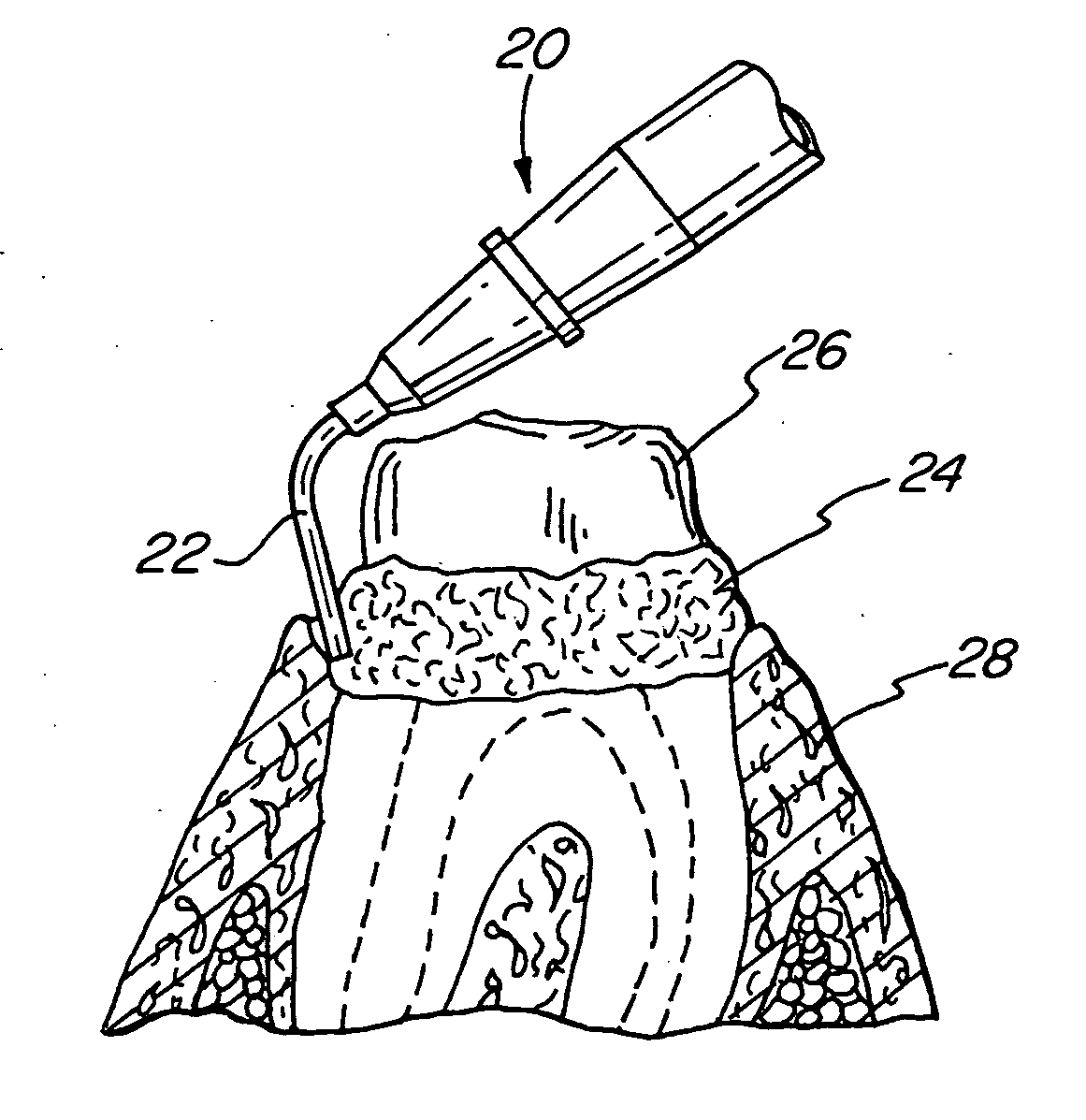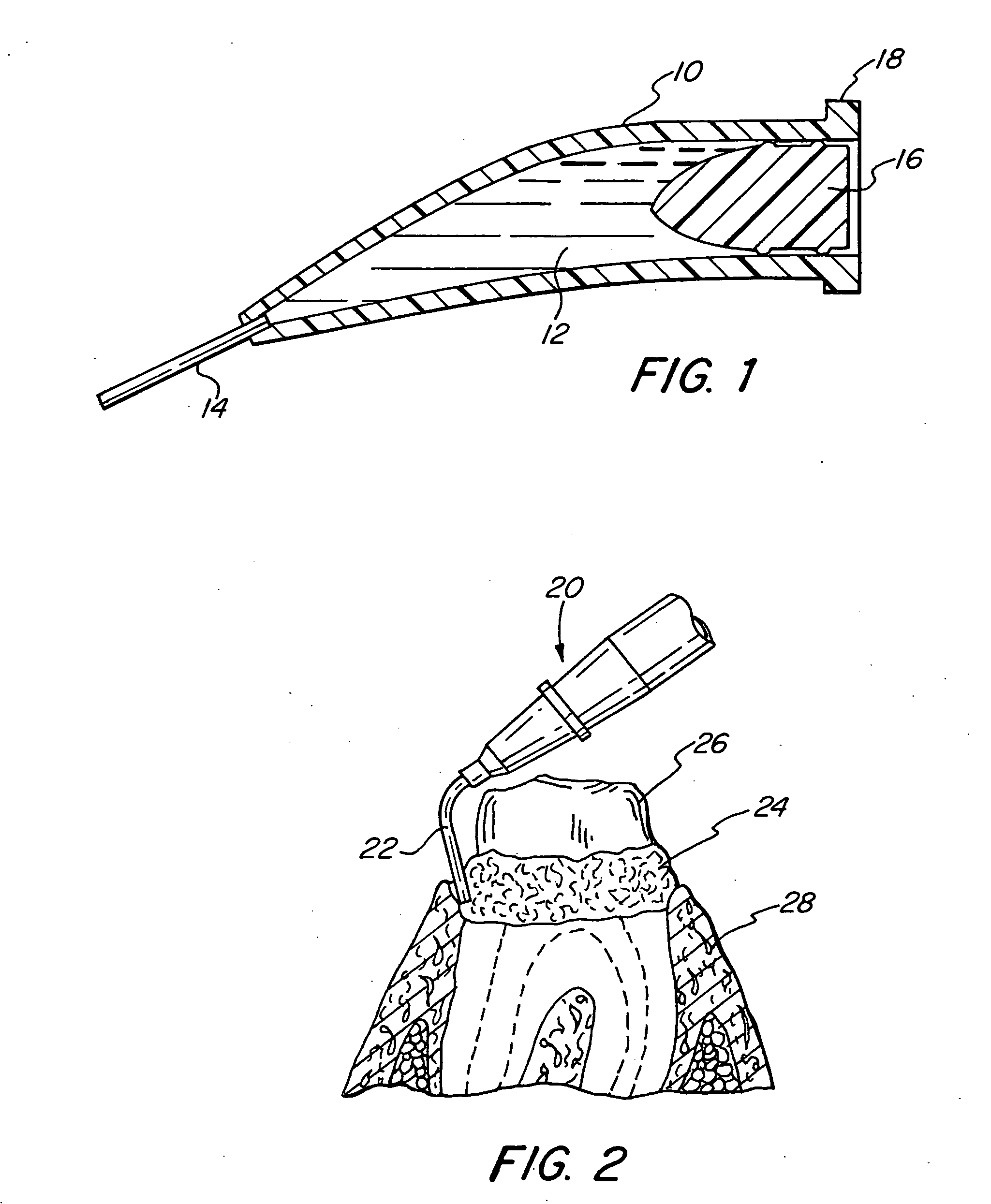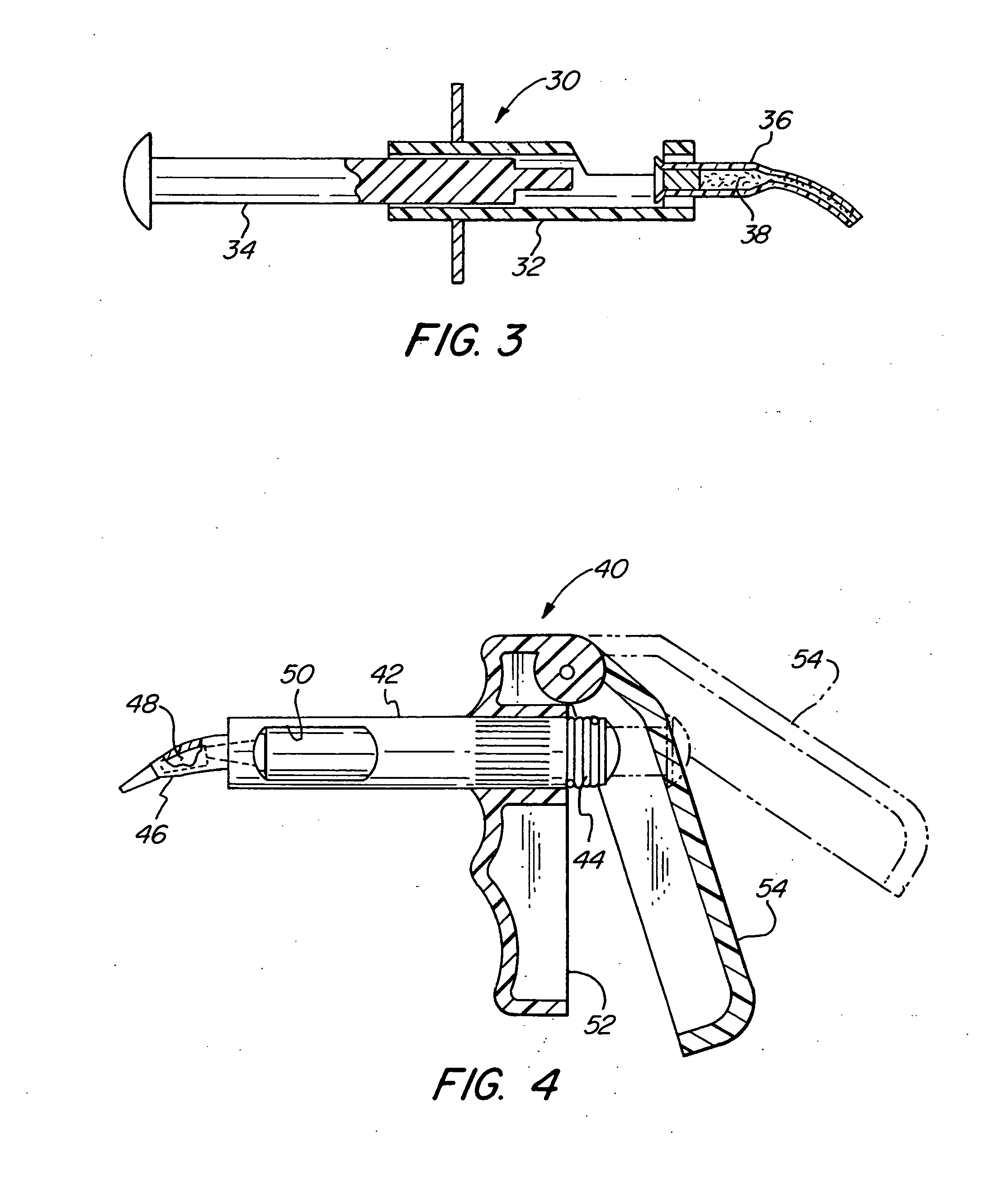Dental retraction material having enhanced fluid absorption
a technology of retraction material and fluid absorption, which is applied in the field of retraction material, can solve the problems of inability to make an accurate impression of the prepared tooth, inability to apply additional bleeding into the space, and time-consuming and painful or extremely uncomfortable for patients, etc., and achieves the effect of reducing the amount of fluid in the space between the gum and the base of the tooth, easy application and convenient benting
- Summary
- Abstract
- Description
- Claims
- Application Information
AI Technical Summary
Benefits of technology
Problems solved by technology
Method used
Image
Examples
Embodiment Construction
[0030]FIG. 1 schematically illustrates the present invention and retraction material of the present invention in a capsule 10. The capsule 10 aids in dispensing and placement of the retraction material 12 placed in the capsule 10. At the discharge end of the capsule 10 there may be placed a needle cannula 14, and at the other or loading end of the capsule 10 is a plug or piston 16. The plug or piston 16 is advanced toward the dispensing end to extrude the retraction material 12. A flange 18 is placed at the loading end to attach to a syringe or other device to displace the plug or piston 16. Preferable the syringe or other device has a mechanical advantage such as the manual extruder disclosed in U.S. Pat. No. 4,198,756 issuing to Dragan on Apr. 22, 1980, which is herein incorporated by reference. The syringe may also be of the type disclosed in U.S. Pat. No. 3,581,399 issuing to Dragan on Jun. 1, 1971, which is herein incorporated by reference.
[0031]FIG. 2 illustrates the technique...
PUM
 Login to View More
Login to View More Abstract
Description
Claims
Application Information
 Login to View More
Login to View More - R&D
- Intellectual Property
- Life Sciences
- Materials
- Tech Scout
- Unparalleled Data Quality
- Higher Quality Content
- 60% Fewer Hallucinations
Browse by: Latest US Patents, China's latest patents, Technical Efficacy Thesaurus, Application Domain, Technology Topic, Popular Technical Reports.
© 2025 PatSnap. All rights reserved.Legal|Privacy policy|Modern Slavery Act Transparency Statement|Sitemap|About US| Contact US: help@patsnap.com



